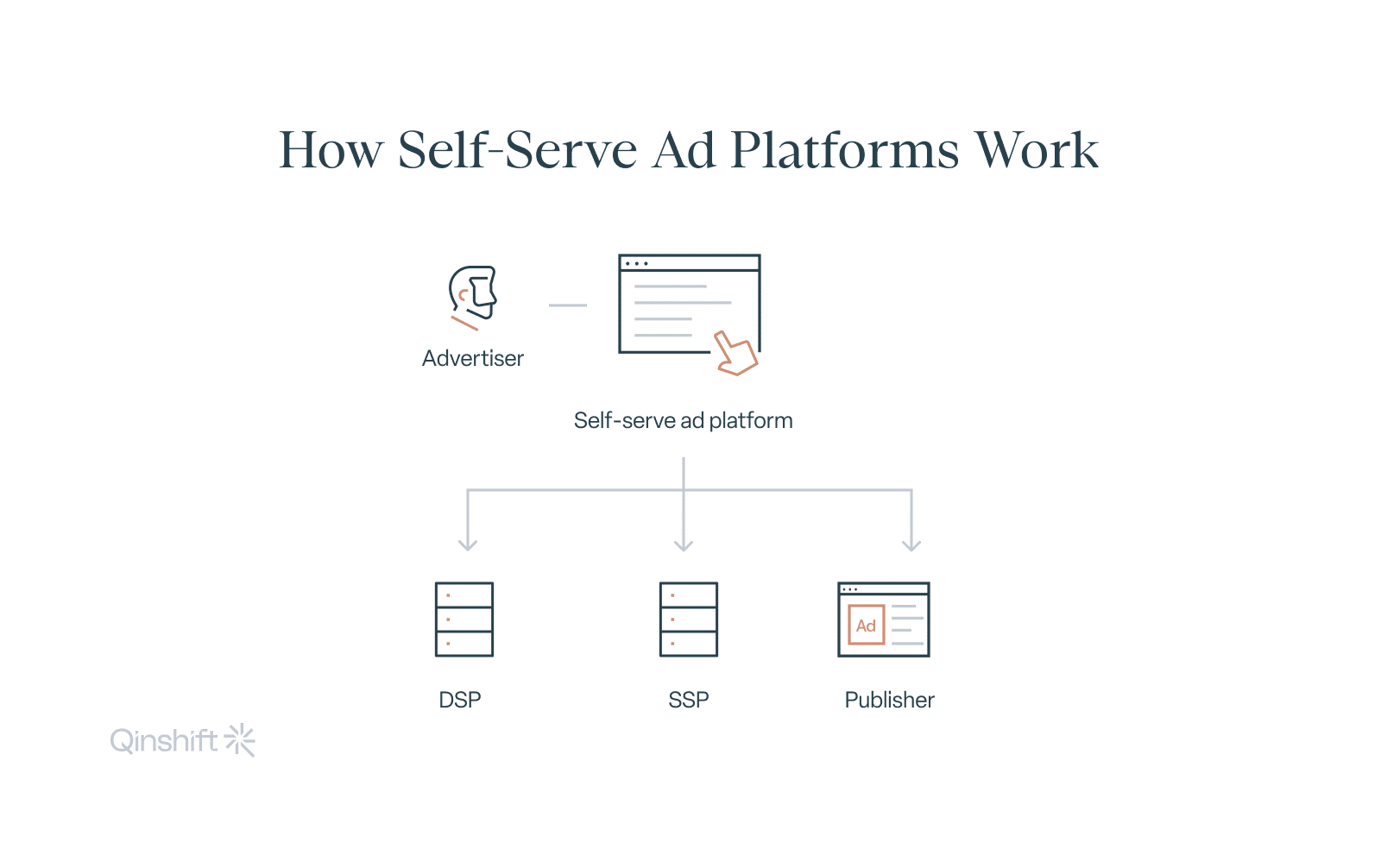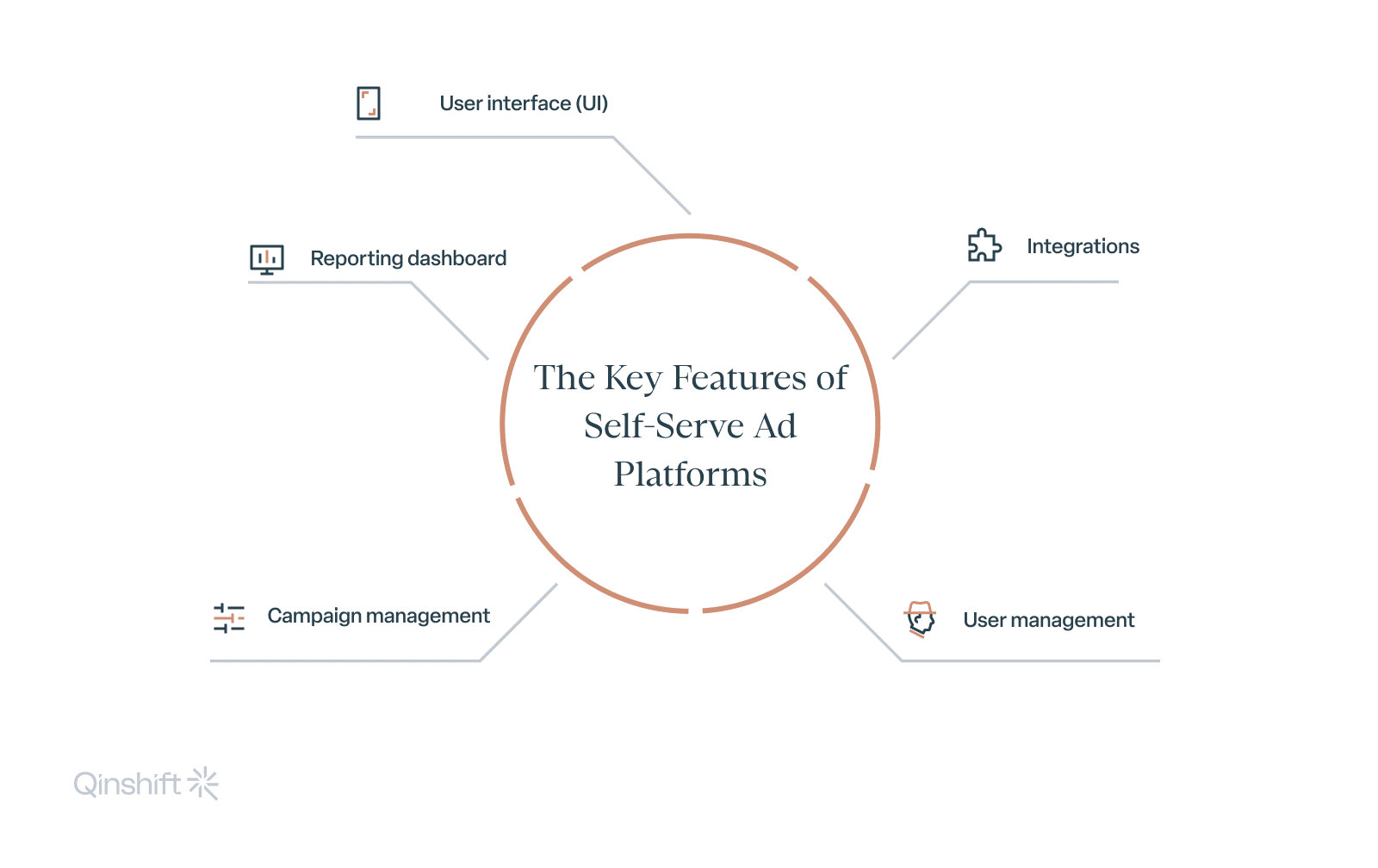What Is a Self-Serve Ad Platform and How Does It Work?

In the fast-paced world of digital marketing, self-serve advertising platforms offer a streamlined solution for businesses and agencies alike.
From defining these platforms to exploring the mechanics behind them, this article dives deep into the essentials of self-service advertising.
If you wish to take control of your advertising campaigns, keep reading to find out how self-serve ad platforms work and whether building or renting one is the right choice for your business.
Key Points
- Self-serve ad platforms give advertisers the power to manage their campaigns independently, without relying on others. This means they can oversee everything from crafting ads to tracking performance, putting them in charge of their advertising activities.
- These platforms offer key tools like user-friendly interfaces for easy campaign oversight, robust campaign management capabilities, insightful reporting dashboards for tracking performance, flexible user management systems, and crucial integrations with other AdTech platforms and data sources.
- Whether it’s building or renting a self-serve ad platform, businesses have options to meet their needs. Owning a platform offers complete control and customisation, ideal for larger firms, while renting provides immediate launch capabilities and lower costs, perfect for startups and smaller agencies.
Self-Service Advertising Platforms: A Beginner’s Guide
The Definition: What Are Self-Serve Ad Platforms?
A self-service advertising platform, also known as a self-serve ad platform, is a tool in advertising technology (AdTech) that empowers advertisers and agencies to independently craft, execute, and oversee their advertising campaigns.
This means they can control the entire process themselves, rather than relying on a publisher’s or AdTech company’s team to do it for them.
The Mechanics: How Do Self-Serve Ad Platforms Work?
A self-service advertising platform connects with other AdTech systems like DSPs or SSPs, as well as data platforms such as DMPs or CDPs. These platforms enable users to create and manage ad campaigns directly on a publisher’s digital platforms, like websites or video streaming services, often using an ad server.
After a user sets up a campaign on the self-serve ad platform, the information gets relayed to the AdTech and data platforms through an application programming interface (API). Any adjustments made within the self-service advertising platform are automatically updated across the connected AdTech and data platforms. This ensures seamless coordination and consistent campaign management.

The Characteristics: What Are the Key Features of Self-Serve Ad Platforms?
When it comes to self-service advertising platforms, each one may vary, but they all share common essential features.<
User interface (UI)
A good UI is crucial for both the company managing the platform (like a DSP or an ad agency) and their clients. It helps in overseeing campaigns, user management, and integrations.
Campaign management
This aspect handles creating, launching, and modifying ad campaigns. Users can specify details like ad type (text, native, video), duration, target locations, where ads appear, and other criteria.
Reporting dashboard
Users rely on this feature to track campaign performance. It provides key metrics such as impressions, clicks, conversions, and rates like click-through or conversion. It also offers insights based on factors like location, device type, and ad format.
User management
This tool allows administrators to add or remove users and control their access to different parts of the platform.
Integrations
Integrating with other AdTech platforms such as DSPs, SSPs, ad networks, and ad servers is essential for campaign execution. Additionally, connections with data platforms like DMPs and CDPs help in targeting specific audiences. For instance, a publisher might use such integrations to let advertisers reach their audience effectively.
To Build, or Not to Build, That Is the Question: Building vs. Renting a Self-Serve Ad Platform
When considering whether to build or rent a self-service advertising platform, it’s essential to weigh the pros and cons carefully.
By considering these factors, you can make an informed decision that aligns with your business goals and resources.
Benefits of Building Your Own Self-Serve Ad Platform
- Complete ownership of technology, code, and data
- Total control over product development
- Ability to tailor features and integrations to your needs
Optimal for:
- AdTech organisations
- Large media companies
- Medium-to-large ad agencies
Benefits of Renting a Self-Serve Ad Platform
- Immediate campaign launch capability
- Lower ongoing expenses
- No need for technical upkeep
Optimal for:
- Small AdTech startups validating their concepts
- Minor media outlets
- Compact ad agencies
How to Build a Self-Serve Advertising Platform
Creating a self-service advertising platform follows a structured process similar to developing any software project.
Here’s a breakdown of the steps we follow at Qinshift for crafting self-serve ad platforms along with other AdTech and MarTech solutions:
Discovery
- Grasping the objectives, vision, and context of your project
- Pinpointing initial requirements and potential technical hurdles
- Addressing technical queries that arise during this phase
Sprint 0
- Tackling technical uncertainties and seeking viable solutions
- Choosing features for the basic version (MVP) and outlining user tasks to shape the product roadmap
- Researching the best technology stack and infrastructure design
- Conducting preliminary development or proof-of-concept (PoC) work
MVP Development
- Developing the MVP encompassing frontend, backend, and UX/UI design, as well as quality assurance
- Rolling out the MVP to initial users or stakeholders
- Collecting feedback for refining the platform in the subsequent phase
- Continuously monitoring the platform and solving any urgent issues
Post-MVP Development and Maintenance
- Iteratively enhancing the platform through Agile development cycles (typically every two weeks)
- Striving to introduce new features or enhancements regularly
- Offering ongoing support and upkeep for the software and underlying infrastructure
- Optionally transitioning the project to your in-house team, if applicable
Examples of Self-Service Advertising Platforms We’ve Developed
Over the years, our AdTech and MarTech development teams — back then still operating under the Clearcode brand — have crafted several self-serve ad platforms for AdTech firms, publishers, media companies, and ad agencies.
Here are a few standout projects:
Self-Serve Ad Platform for an AdTech Firm
We collaborated with a top European AdTech firm to create their self-serving advertising platform.
This platform links seamlessly with their DSP, empowering clients like ad agencies and brands to craft and run their own campaigns within the DSP.
Self-Serve Ad Platform for an OTT Streaming Giant
We joined forces with one of Asia’s largest OTT streaming services to develop their self-serving advertising platform.
This platform enables advertisers to craft ad campaigns and reach viewers enjoying content on the streaming platform.
Self-Serve Ad Platform for a Digital Advertising Agency
A digital advertising agency in the US partnered with us to build their self-service advertising platform.
This platform equips advertisers with the tools needed to create campaigns and showcase ads to users across various publishers.
Looking for AdTech & MarTech development services?
Discover how our teams can help you design, build and maintain advertising and marketing software.

